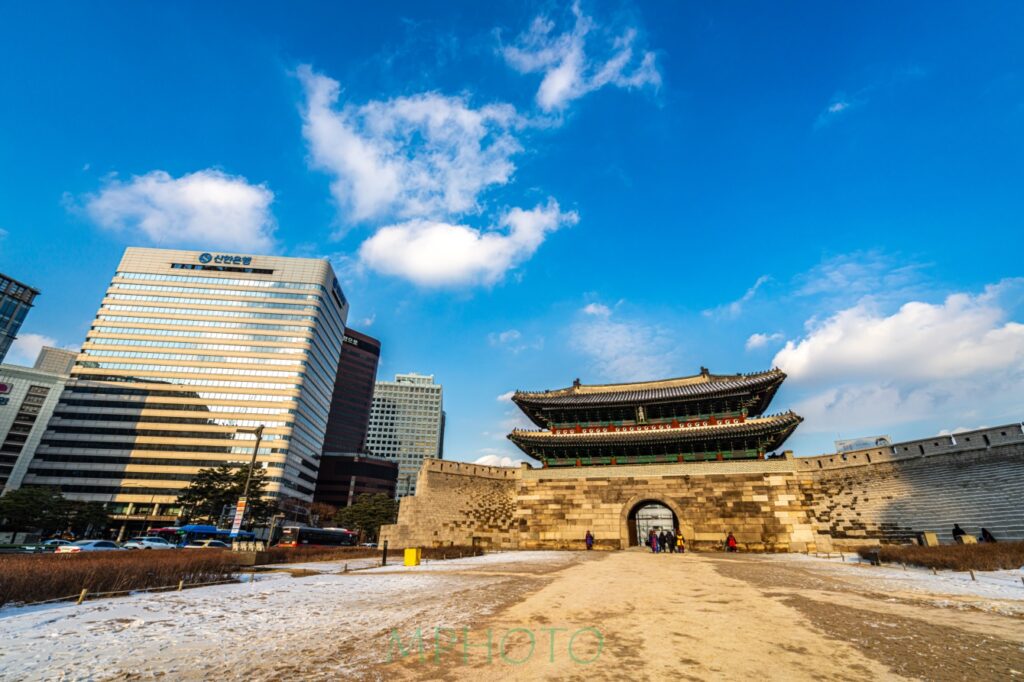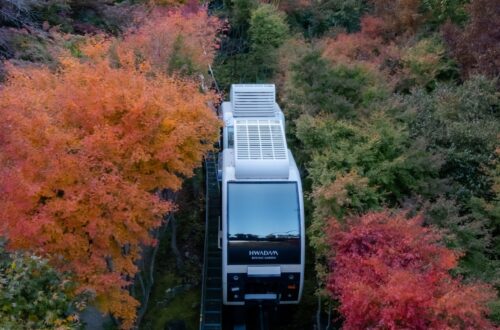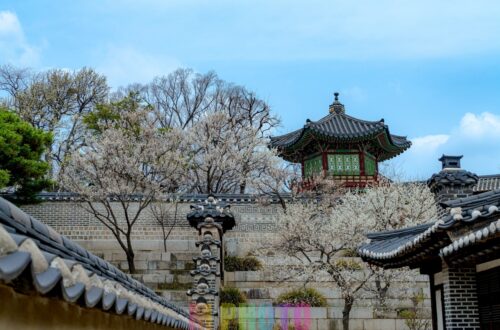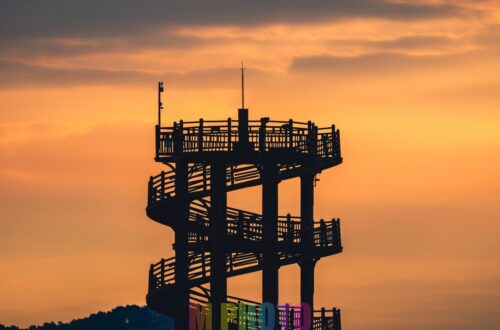Seoul Travel – Sungnyemun

Discovering Sungnyemun: Seoul’s Historic Gate of Respect
Sungnyemun, also widely known as Namdaemun or the “Great Southern Gate,” is not just a significant historical monument in Seoul, South Korea, but also a symbol of the city’s rich heritage and cultural resilience. This iconic gate offers a fascinating glimpse into Korea’s past and stands as a testament to the country’s architectural prowess and historical endurance.
A Journey Through History
Sungnyemun, which translates to the “Gate of Exalted Ceremonies,” was constructed in 1398 during the early Joseon Dynasty under the reign of King Taejo. It served as one of the four main gates protecting the capital city, then called Hanyang, which is modern-day Seoul. The gate was not only a defensive structure but also a ceremonial one, used for important state events and the welcoming of foreign dignitaries.
In 2008, a tragic arson attack severely damaged the wooden structure of Sungnyemun, leading to a significant restoration project that lasted until 2013. The painstaking restoration aimed to return the gate to its original glory, using traditional construction techniques and materials. Today, Sungnyemun stands proudly as National Treasure No. 1, symbolizing both Korea’s historical depth and its capacity for renewal.
Architectural Marvel
Sungnyemun is a striking example of traditional Korean architecture. The gate combines a stone base with a two-story wooden pavilion. The curved eaves, intricate carvings, and vibrant colors showcase the architectural style of the Joseon Dynasty, reflecting the aesthetics and craftsmanship of the period. The gate’s robust structure, originally designed to fend off invaders, is a testament to the engineering ingenuity of the time.
The Surrounding Vibrancy: Namdaemun Market
Just steps away from Sungnyemun lies Namdaemun Market, one of the largest and oldest traditional markets in Korea. Established in the early 15th century, this market offers a vibrant shopping experience where you can find everything from traditional Korean crafts and souvenirs to fashion, electronics, and a plethora of street food.
Walking through the bustling alleys of Namdaemun Market, you’ll encounter the lively spirit of local vendors and shoppers. The market is a melting pot of sounds, smells, and sights, providing a sensory overload that complements the historical gravitas of Sungnyemun.
Visiting Sungnyemun
Sungnyemun is conveniently located in central Seoul and is easily accessible by public transportation. Here are a few tips for your visit:
- Location: Sungnyemun is situated in Jung-gu, Seoul, at the intersection of major roads near Seoul Station and City Hall.
- Subway Access: Take Line 1 or Line 4 to Seoul Station and exit towards Namdaemun. Alternatively, you can take Line 2 to City Hall Station and walk south.
- Visiting Hours: The gate is visible and accessible 24/7, although the interior is not open to the public.
- Best Time to Visit: To experience both the historical site and the market, visit during the day. However, the gate is beautifully illuminated at night, offering a picturesque view against the city backdrop.
Why Visit Sungnyemun?
Sungnyemun is not just a gate but a portal into Korea’s storied past. Visiting this historic site allows you to appreciate the architectural beauty, learn about Korea’s resilience through its restoration, and immerse yourself in the vibrant culture that surrounds it. It’s a must-see for history enthusiasts, culture seekers, and anyone looking to connect with Seoul’s rich heritage.
How to Get to Sungnyemun (Namdaemun) Gate
Sungnyemun, also known as Namdaemun, is centrally located in Seoul and is easily accessible via various transportation methods. Here’s a guide on how to reach this historic landmark:
By Subway
Option 1: Seoul Station (Line 1 or Line 4)
- Take Line 1 (Blue Line) or Line 4 (Light Blue Line) and get off at Seoul Station.
- Exit through Exit 4. From here, it’s a short 10-minute walk to Sungnyemun.
- Walk south along Sejong-daero until you see the gate on your right.
Option 2: City Hall Station (Line 2)
- Take Line 2 (Green Line) and get off at City Hall Station.
- Use Exit 7 or Exit 8. Sungnyemun is about a 15-minute walk from the station.
- Head south along Sejong-daero, and you will find Sungnyemun at the intersection.
Option 3: Hoehyeon Station (Line 4)
- Take Line 4 (Light Blue Line) and get off at Hoehyeon Station.
- Use Exit 5. The gate is a quick 5-minute walk from the station.
- Walk straight towards the main intersection, and you’ll see Sungnyemun right ahead.
By Bus
Several bus routes stop near Sungnyemun. Look for these bus numbers:
- Blue Buses (Main Line): 100, 150, 151, 162, 163, 401, 406
- Green Buses (Branch Line): 7011, 7013
- Airport Buses: 6001, 6015
Ask the driver to notify you when you reach Namdaemun or Sungnyemun, as bus stops are typically announced in English as well.
By Taxi
Taxis are a convenient option in Seoul. Simply tell the driver “Sungnyemun” or show the Korean name “숭례문” to ensure you reach the correct destination. Taxis are equipped with GPS, so they can easily find the gate.
On Foot
If you’re staying or exploring nearby areas such as Myeongdong, Seoul Station, or City Hall, you can easily walk to Sungnyemun. The gate is centrally located and well-signposted, making it easy to navigate on foot.
Address
For navigation, use the following address:
- 40 Sejong-daero, Jung-gu, Seoul, South Korea
Tips for a Smooth Visit
- Plan Your Route: Seoul’s public transport system is extensive and efficient. Check subway and bus routes beforehand to ensure a smooth journey.
- Avoid Rush Hour: Try to travel outside of peak hours (7:00 AM – 9:00 AM and 5:00 PM – 7:00 PM) to avoid crowded trains and buses.
- Nearby Attractions: Consider combining your visit to Sungnyemun with nearby attractions like Namdaemun Market or Deoksugung Palace, both of which are within walking distance.
Sungnyemun is not only a key historical site but also a central landmark, making it easily accessible and a worthwhile addition to any Seoul itinerary. Enjoy your visit!




